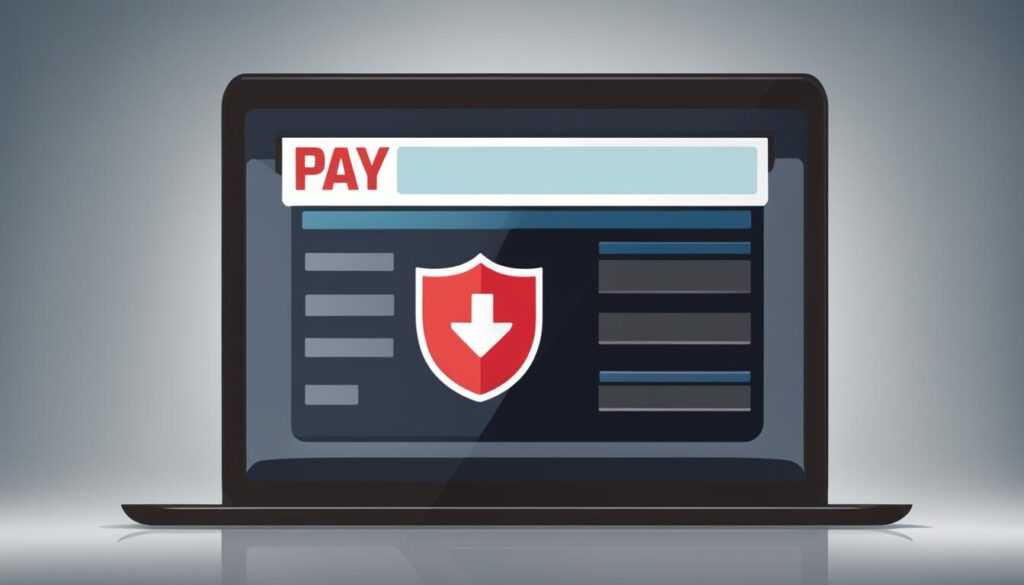How Does PayPal Make Money : PayPal, the renowned fintech company founded in 1998 by Peter Thiel, Luke Nosek, and Max Levchin, has evolved from a simple online payment system to a comprehensive financial solution provider. With a user base of 392 million consumers and 34 million merchants across 200 markets, PayPal has successfully built a robust revenue model based on various income sources.
Key Takeaways:
- PayPal has diversified its services over the years, offering a full stack of financial solutions.
- Transaction fees, currency conversion fees, merchant services, interest income, and loans are key sources of PayPal’s revenue.
- PayPal’s marketing strategy focuses on brand recognition, user convenience, partnerships, security, and trust.
- Online and mobile platforms, partnerships, payment buttons, APIs, and digital wallets contribute to PayPal’s distribution strategy.
- PayPal’s competitive advantage lies in its trusted brand, network effect, global reach, diverse product portfolio, and robust security measures.
PayPal’s History and Innovation
PayPal, originally known as Confinity, was founded in 1998 to address the need for a secure and convenient online payment system. From the beginning, PayPal focused on providing users with a platform that ensured secure transactions and built trust between buyers and sellers.
One of PayPal’s early innovations was the introduction of encryption to protect customer information. By implementing robust security measures, PayPal established itself as a reliable platform for online payments.
Over the years, PayPal has continued to innovate and expand its services to meet the evolving needs of customers. The company’s commitment to innovation has positioned it as a leading fintech company in the digital payment industry.
To further enhance its capabilities, PayPal has made strategic acquisitions. Companies like Braintree and Venmo have joined the PayPal family, contributing to its growth and success. These acquisitions have allowed PayPal to broaden its range of financial solutions and stay at the forefront of the industry.
The Evolution of PayPal
PayPal’s journey has been marked by constant evolution and adaptation. As a fintech company, PayPal has continuously improved its services and implemented new features to enhance the user experience.
“We are constantly investing in technology and innovation to make online payments more secure, convenient, and accessible to everyone,” says the PayPal team.
Some notable milestones in PayPal’s history include:
- 2000: PayPal becomes a public company and experiences rapid growth.
- 2002: PayPal is acquired by eBay for $1.5 billion, setting the stage for remarkable future expansion.
- 2008: PayPal introduces a mobile payment solution, paving the way for convenient mobile transactions.
- 2012: PayPal reaches one million active customers in Australia.
- 2013: PayPal announces its partnership with Discover, expanding its reach to millions of merchants.
- 2014: PayPal acquires Braintree, a leading mobile payment platform, strengthening its position in the mobile payments market.
- 2015: PayPal separates from eBay, becoming an independent publicly traded company once again.
- 2019: PayPal ventures into the cryptocurrency space, allowing users to buy, sell, and hold cryptocurrencies.
The Impact of PayPal’s Innovation
PayPal’s continuous innovation has revolutionized the way people make online payments. The company’s commitment to providing secure and convenient transactions has earned it the trust of millions of users worldwide.
Through its innovative solutions, PayPal has played a significant role in the growth of the fintech industry. The company has not only made online payments more accessible but also encouraged the adoption of digital financial services.
PayPal’s impact can be seen in various aspects:
| Innovation | Impact |
|---|---|
| Secure Transactions | PayPal’s encryption and fraud prevention measures have made online transactions safer for users, building trust in the digital payment ecosystem. |
| Convenience | With PayPal, users can make payments with just a few clicks, eliminating the need for entering payment information repeatedly. |
| Global Reach | PayPal’s services enable cross-border transactions, facilitating global commerce and connecting businesses and consumers worldwide. |
| Support for Small Businesses | PayPal provides tools and solutions that empower small businesses to accept online payments and grow their customer base. |
Through its rich history and dedication to innovation, PayPal has become a trailblazer in the fintech industry, redefining the way people transact online. Beyond its success as a company, PayPal’s impact on the digital payment landscape cannot be overstated.
PayPal’s Solutions for Merchants

PayPal offers an array of services to simplify online transactions for merchants. With these solutions, merchants can optimize their payment processes, expand their reach, and gain valuable business insights. Let’s explore the key offerings that PayPal provides to empower merchants.
Payment Buttons
One of the standout features offered by PayPal is its payment buttons. These buttons enable merchants to accept payments directly on their websites, providing a seamless checkout experience for customers. Even if merchants don’t have a dedicated e-commerce platform, they can easily integrate PayPal’s payment buttons to start accepting payments efficiently. This offers flexibility and convenience for both merchants and customers.
Integrated Platforms
PayPal integrates seamlessly with popular e-commerce platforms like Shopify, making it easier for merchants to expand their online presence. By connecting their Shopify stores to PayPal, merchants can leverage the benefits of a trusted payment solution while streamlining their operations. This integration allows for smooth payment processing, reducing friction for customers and increasing conversion rates for merchants.
Reporting Tools
Understanding the performance of a business is essential for making informed decisions. PayPal provides robust reporting tools that enable merchants to gain valuable insights into their sales, revenue, and customer behavior. This data-driven approach empowers merchants to identify trends, optimize their products or services, and tailor their strategies to drive growth.
PayPal’s Services for Consumers

When it comes to making online payments securely, consumers can rely on PayPal’s comprehensive range of services. With PayPal, consumers can conveniently pay for their purchases on various websites without the hassle of repeatedly entering their payment information.
But that’s not all. PayPal goes beyond facilitating local transactions, offering a seamless experience for cross-border transactions as well. Whether you need to send or receive money internationally, PayPal makes it simple and efficient.
One of the standout features of PayPal’s services is its robust buyer protection. With PayPal, consumers can shop with confidence, knowing that they are safeguarded against fraud or disputes with sellers. This added layer of security ensures peace of mind for consumers, making PayPal their preferred choice for secure online payments.
Whether you need to shop online, send money to loved ones overseas, or simply want a secure payment solution, PayPal has you covered. With its user-friendly interface, extensive reach, and commitment to buyer protection, PayPal remains the go-to platform for consumers seeking convenience, reliability, and peace of mind.
PayPal’s Revenue Streams

PayPal generates revenue through various channels, utilizing its diverse range of financial services and products. These revenue streams contribute to the company’s overall growth and profitability. Let’s explore the key sources of PayPal’s revenue:
- Transaction Fees: PayPal charges transaction fees for processing payments and money transfers. These fees vary based on the type and value of the transaction, providing a consistent source of income for the company.
- Currency Conversion Fees: When users make transactions in different currencies, PayPal charges currency conversion fees. This additional revenue stream ensures that PayPal benefits from cross-border transactions.
- Merchant Services: PayPal collects fees from merchants who utilize its payment solutions. These fees may be in the form of transaction fees or subscriptions to premium merchant services, such as advanced reporting tools or customized payment integrations.
- Interest Income: PayPal earns interest income from the funds held in user accounts. By leveraging these funds, PayPal generates additional revenue through interest accrual.
- Loans: PayPal offers business loans through its service called PayPal Working Capital. By providing loans to businesses, PayPal earns interest income from the repayment of these loans. This financial service helps PayPal support small and medium-sized enterprises in their growth and expansion initiatives.
Through these revenue streams, PayPal maintains a strong financial position, allowing it to invest in innovation, expand its services, and enhance user experience.
PayPal’s Marketing Strategy

PayPal employs a robust marketing strategy aimed at establishing brand recognition and trust as a leading payment platform. By emphasizing user convenience, PayPal seeks to simplify online payments and enhance the overall user experience. The company leverages strategic partnerships with prominent e-commerce platforms and banks, expanding its reach and attracting a larger user base. To incentivize and retain users, PayPal offers enticing promotions, including cashback and discounts. Paramount to PayPal’s marketing efforts is the assurance of security and trust, assuring users that their financial transactions are safeguarded.
One of the key focuses of PayPal’s marketing strategy is building brand recognition. By consistently delivering exceptional user experiences, PayPal has become synonymous with online payments and is widely recognized and trusted as a secure payment platform. By enhancing brand recognition, PayPal creates a competitive advantage, attracting new users and solidifying its position in the market.
A significant aspect of PayPal’s marketing strategy is user convenience. PayPal highlights the ease of use and simplicity of its services, demonstrating how users can effortlessly make payments, send money, and manage their finances. Through user-friendly interfaces and intuitive functionalities, PayPal ensures that customers can navigate the platform without any complications, ultimately making their lives easier and more convenient.
Collaborating with partners is another crucial element of PayPal’s marketing strategy. By partnering with leading e-commerce platforms and banks, PayPal expands its network and taps into new customer segments. These partnerships enable seamless integrations and offer users a wider range of options when it comes to making secure online payments. By leveraging the credibility and reach of these partners, PayPal enhances its brand visibility and attracts more users.
PayPal’s marketing efforts also revolve around ensuring security and trust. Recognizing the importance of protecting sensitive financial information, PayPal emphasizes the robust security measures it has in place to safeguard transactions. By incorporating advanced encryption technologies and adhering to stringent security protocols, PayPal instills confidence in its users, reassuring them that their financial data is safeguarded throughout every transaction.
Additionally, PayPal offers buyer protection, reinforcing security and trust. This feature safeguards users against fraud and disputes, promoting a sense of security and further increasing trust in the platform. By prioritizing security and trust, PayPal aligns with users’ concerns and expectations, ultimately solidifying its position as a leading payment solution provider.
| Key Elements of PayPal’s Marketing Strategy | Benefits |
|---|---|
| Brand recognition | Establishes trust and attracts new users |
| User convenience | Simplifies online payments, enhances user experience |
| Partnerships | Expands reach, offers seamless integrations |
| Security and trust | Safeguards transactions, instills user confidence |
PayPal’s Distribution Strategy

PayPal has implemented a comprehensive distribution strategy to ensure that its services are accessible and convenient for users. By offering online and mobile platforms, the company caters to the needs of a diverse user base, allowing them to create accounts, manage funds, and make payments with ease.
In addition to its own platforms, PayPal establishes partnerships with various organizations, including e-commerce platforms and banks, to expand its reach and attract more users. These partnerships enable PayPal to integrate its services seamlessly into popular online platforms, providing users with a seamless payment experience.
To facilitate the integration process, PayPal provides payment buttons and APIs that businesses can easily incorporate into their websites and apps. This integration allows businesses to leverage PayPal’s secure and reliable payment processing capabilities, enhancing their customer experience and streamlining their operations.
Furthermore, PayPal offers digital wallets such as PayPal One Touch and Venmo, which are specifically designed for convenient mobile payments. These digital wallets provide users with a quick and hassle-free way to make transactions on the go, further enhancing the accessibility and convenience of PayPal’s services.
In summary, PayPal’s distribution strategy focuses on providing accessible and convenient platforms, forming partnerships, offering payment buttons and APIs, and developing digital wallets. These initiatives enable PayPal to reach a wider audience, expand its user base, and maintain its position as a leading digital payment platform.
PayPal’s Organization Structure
PayPal operates with a functional organizational structure, with different teams responsible for different aspects of the business.
The leadership team, led by the CEO, provides strategic direction and oversees the company’s overall operations.
Leadership Team
The leadership team at PayPal plays a crucial role in guiding the company towards its goals and objectives. Under the leadership of the CEO, the team ensures effective decision-making and the implementation of strategic initiatives.
The leadership team is comprised of experienced professionals who bring diverse expertise and insights to drive the company’s success.
The technology and product development team focuses on platform development and enhancing PayPal’s features.
Technology and Product Development
The technology and product development team at PayPal is responsible for continuously innovating and improving the company’s platform.
By leveraging cutting-edge technologies and staying up-to-date with industry trends, the team ensures that PayPal remains at the forefront of the fintech industry.
The sales and marketing team drives user acquisition, partnerships, and marketing efforts.
Sales and Marketing
The sales and marketing team at PayPal focuses on attracting new users, establishing partnerships with businesses, and conducting effective marketing campaigns.
Through targeted strategies and innovative campaigns, the team aims to expand PayPal’s user base and increase brand awareness.
The risk and compliance team ensures regulatory compliance and manages fraud prevention.
Risk and Compliance
The risk and compliance team at PayPal is dedicated to maintaining a secure and trustworthy platform for users.
By complying with regulations and implementing effective risk management practices, the team safeguards the interests of both PayPal and its users.
Lastly, the customer support team is responsible for ensuring customer satisfaction and providing support.
Customer Support
The customer support team at PayPal plays a vital role in delivering excellent customer service to users.
By addressing user inquiries, resolving issues, and offering timely assistance, the team ensures a positive user experience and fosters customer loyalty.
PayPal’s Competitive Advantage

PayPal holds a strong competitive advantage in the payment industry due to several key factors. One of the primary reasons for PayPal’s success is its reputation as a trusted and reliable brand. With two decades of experience in facilitating secure and convenient transactions, PayPal has gained the trust of millions of users worldwide.
Image:
The network effect also plays a crucial role in PayPal’s competitive advantage. As more users and businesses join the platform, the value and usefulness of the payment network increase exponentially. This creates a positive feedback loop, attracting even more users and reinforcing PayPal’s position as a leading payment solution.
PayPal’s global reach sets it apart from its competitors. With its extensive network spanning over 200 markets, PayPal enables cross-border transactions and offers solutions for currency exchange. This global presence allows PayPal to cater to a diverse range of customers and facilitate seamless transactions on a global scale.
In addition to its broad reach, PayPal’s diverse product portfolio gives it a competitive edge. In addition to its core payment services, PayPal offers credit and financing options, empowering individuals and businesses with flexible and accessible financial solutions.
Security is of paramount importance in the payments industry, and PayPal has established robust security measures to protect user transactions. These measures include advanced encryption technology, multi-factor authentication, and fraud detection systems. By prioritizing user security, PayPal instills confidence and peace of mind among its users.
Summary:
PayPal’s competitive advantage stems from its trusted brand, network effect, global reach, diverse product portfolio, and robust security measures. These factors contribute to PayPal’s ongoing success in the highly competitive payment industry.
PayPal’s Ownership and Acquisitions

PayPal, the renowned fintech company, is currently a sub-organization of eBay. In 2002, eBay acquired PayPal for $1.5 billion, a move that significantly impacted the company’s ownership structure. The acquisition brought immense wealth to the founders and early investors of PayPal, including Peter Thiel, Elon Musk, and Reid Hoffman, solidifying their success in the industry.
In addition to this pivotal acquisition, PayPal has strategically pursued further growth through a series of acquisitions over the years. These acquisitions have played a crucial role in expanding PayPal’s services and enhancing its capabilities, cementing its position as a leading financial services provider.
Notable acquisitions made by PayPal include:
- Braintree: An online payment gateway company that provides merchants with seamless payment solutions.
- Venmo: A popular peer-to-peer payment platform that simplifies money transfers between individuals.
- Xoom: A digital money transfer service that enables secure and efficient international transactions.
- iZettle: A company specializing in Point of Sale (POS) solutions, empowering small businesses with effective payment processing options.
These key acquisitions have propelled PayPal’s growth and success, enabling the company to offer a comprehensive range of financial services to a global customer base.
Conclusion
In conclusion, PayPal has revolutionized the fintech industry by establishing itself as a leading payment platform. Through its robust revenue model, PayPal generates income from multiple sources, including transaction and currency conversion fees, merchant services, interest income, and loans. These diverse income streams contribute to PayPal’s financial success and stability.
By offering innovative solutions tailored to the needs of both merchants and consumers, PayPal has gained the trust and widespread acceptance of users worldwide. Its commitment to security, convenience, and seamless user experience has set it apart from competitors in the digital payment landscape.
Furthermore, PayPal’s effective marketing and distribution strategies have played a significant role in attracting a large user base and expanding its global reach. Collaborations with e-commerce platforms, banks, and other partners have further strengthened its position as a preferred payment solution for businesses and individuals alike.
With its competitive advantage, which includes a trusted brand, global network, diverse product portfolio, and stringent security measures, PayPal continues to lead the way in driving innovation and shaping the future of digital payments. As technology continues to evolve, PayPal remains committed to providing cutting-edge financial solutions that meet the growing demands of the digital economy.
Also Refer : Discover How To Make Money In One Hour – Quick & Easy Tips!
FAQs
Q: What is PayPal’s business model?
A: PayPal’s business model primarily revolves around processing payment transactions, charging fees for certain services, and offering value-added services to its users paypal account credit cards paypal also credit card like paypal debit and credit cards million active accounts also makes money.
Q: How does PayPal make money?
A: PayPal makes money through various means, including transaction revenue, fees from using credit and debit cards, revenue from value-added services, referral fees, and revenue from active accounts.
Q: How does using PayPal contribute to its revenue?
A: When users send and receive money, make payments, or receive payments through PayPal, the company charges fees for these transactions, thereby generating revenue.
Q: What are some of the other value-added services that contribute to PayPal’s revenue?
A: PayPal generates revenue from other value-added services such as PayPal Credit, PayPal Business Accounts, PayPal Holdings, PayPal Debit Cards, PayPal Cash, and PayPal Checkout.
Q: How does PayPal make money from transferring money?
A: PayPal makes money by charging fees for transferring money between accounts and also earns revenue from the movement and management of money within its platform.
Q: How does PayPal’s credit facility contribute to its revenue?
A: PayPal makes money through PayPal Credit, where it charges interest and fees on credit extended to users and businesses.
Q: What are the various ways in which PayPal charges fees?
A: PayPal charges fees for processing payment transactions, making business transactions, withdrawing money, and using its value-added services.
Q: What role does PayPal’s total payment volume play in its revenue generation?
A: PayPal’s revenue is significantly influenced by its total payment volume, which reflects the total value of payments processed through its platform.
Q: How does PayPal’s involvement in the movement of money contribute to its revenue?
A: PayPal generates revenue from facilitating the movement of money, as it charges fees for the transfer and management of funds and provides financial services to businesses and individuals.
Q: How does PayPal’s business account feature contribute to its revenue?
A: PayPal earns revenue from businesses that use its business accounts, as it offers specific services tailored to business needs and charges fees for these services.













